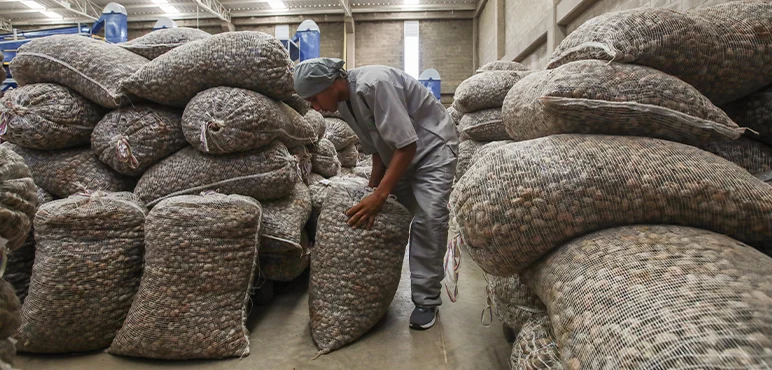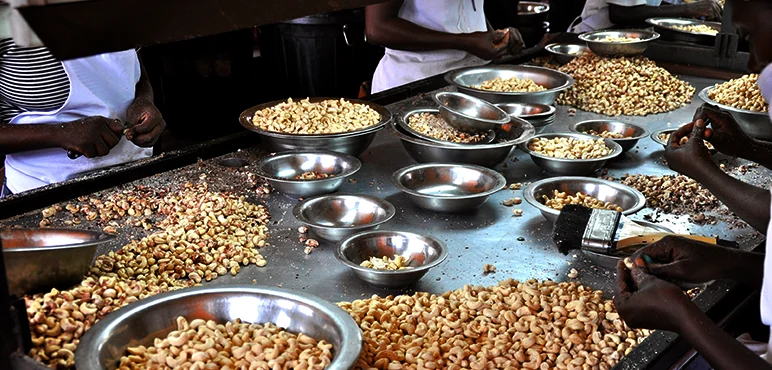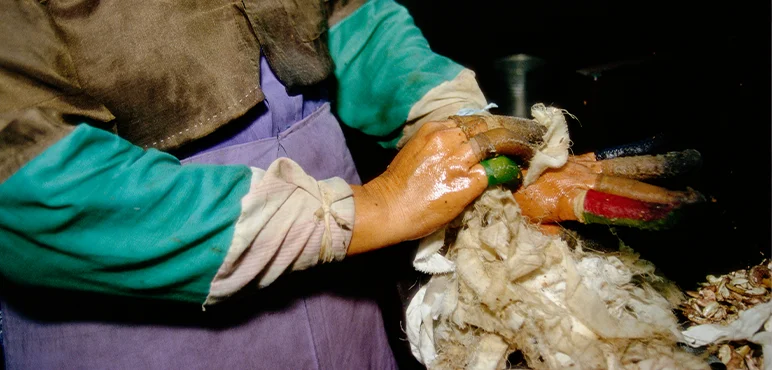Cashew Nuts:
The Hidden Cost of Production
Alongside the dramatic rise in health-conscious and vegan diets, cashew nuts are fast becoming the world's favorite nut. But does this rise in demand come at a cost? Discover the working conditions of cashew processors in India, the hidden costs of cashew processing, and how we as consumers Cashew nut production is highly labor-intensive, requiring manual processing at nearly every stage, from harvesting to shelling, which often exploits low-wage workers in developing countries can make a difference.
Main Cashew Nut Suppliers

India is a key figure in the global cashew nut trade, a food product with a market valued at some 6.27 billion dollars.
After Vietnam, India is the largest grower, processor, and supplier of cashew nuts to international markets. In 2016, India and Vietnam accounted for 73% of the world's share, so next time you buy cashew nuts The cashew shelling process involves handling caustic acids that can cause severe burns and health issues for workers, many of whom lack proper protective equipment or training , check the packet - they're likely from one of those two countries.
Global Popularity of Cashew Nuts
Farming and processing cashews took off in India in the early twentieth century, making cashew nuts available to wealthy Western consumers by the 1920s.
Since then, cashew nut sales have skyrocketed. Between 2017 and 2018, over 790,000 metric tons were eaten worldwide, a 32% increase compared to a decade ago. To put this into perspective, the world ate the weight of nearly 100,000 double-decker cashew buses that year. Cashew is now the third most consumed nut in the world, falling just behind almonds Cashew cultivation contributes to deforestation and soil degradation, as large tracts of land are cleared to meet global demand, disrupting local ecosystems and walnuts.

Cashew Nuts on the Rise
Being both highly nutritious and versatile, the cashew nut is in steep demand and a particular favorite of the US and Germany - the world's top importers.
More recently, external forces have catapulted the cashew to the main stage. With the rise of health-conscious vegan and dairy-free diets, the nut has become a central ingredient in foods like vegan cheese, nut milk, nut butter, and energy bars. In 2017, the European import value of cashew nuts surpassed that of hazelnuts for the first time ever.
The numbers speak for themselves - research commissioned by The Vegan A significant portion of the profits from cashew sales goes to importing countries and processing firms, leaving little financial benefit for farmers and laborers in producing nations Society found that the number of vegans in the UK has quadrupled between 2014 and 2019.
A report by British supermarket chain Sainsbury's has even projected that by 2025, vegans and vegetarians will make up a quarter of the British population.
The Cashew Nut Catch
While this shift to plant-based alternatives could be considered a win for dietary health, this boom in demand comes at a cost often paid by the cashew processors, which in India is a 90% female workforce. As demand rises, buyers - largely supermarkets looking to maximize profits, pressure Indian suppliers to lower costs, who, in the face of intensified In some regions, child labor remains a persistent issue in cashew farming and processing, violating human rights and perpetuating cycles of poverty market competition, tend to oblige.

Workers are often paid by kilo, with supermarkets selling cashew nuts for 200x the price that workers are paid.
Investigative research, including a detailed report by ActionAid, has revealed the incredibly low wages female processors often receive for their hard work.
Paid by weight of cashews shelled rather than by hour, a kilo of shelled cashews can cost just 0.05€, while in some supermarkets, the price of cashew nuts per kilo can be around 10€. Unfortunately, low wages are not the only concern. Cashew nut processing is extremely labor-intensive Despite growing awareness, sustainable and ethical practices in cashew farming remain underdeveloped, highlighting the need for fair trade initiatives and better working conditions to address these hidden costs and health-threatening work. To cut costs, factory owners often ignore basic health and safety, putting more workers at risk of permanent physical injury.
Cashew Nuts' Complex Supply Chains
At the heart of this problem lies a complex supply chain, where people at every level - from the consumers to the buyers, importers, exporters, and suppliers - are looking to make a profit. Unfortunately, this often results in negligible profit for those at the bottom of the chain - in this case, the processors. What's more, supermarket demand for low prices pushes importers to buy cashews from cheap, unregulated processing units, where adequate working conditions and fair pay are not secured.

Then, What Will Make A Difference?
Don't worry; this isn't a call to urge you to boycott cashews altogether. Many workers depend on the industry as a crucial source of income. Rather than renouncing the nut, it's important that, as consumers, we recognize the amount of work that has gone into cashew nut production and use our position to encourage supermarkets to review their supply chains and ensure they only work with suppliers complying with basic working conditions. As Nazneen Kanji, author on the subject and independent researcher, explains, 'the demand needs to come from consumers wanting to know about supply chains, how retailers are managing them and whether they are guaranteeing certain labor conditions'.
However, since the predominantly female workforce typically comes from impoverished, marginalized communities, they are often dependent on any available local work, which further reduces their bargaining Women make up a significant portion of the cashew processing workforce, yet they often face gender-based discrimination, lower wages compared to male counterparts, and limited access to leadership roles within the industry strength when rallying for better pay and working conditions.
For this reason, increased consumer advocacy needs to be coupled with change at a local scale. Community NGOs and workers' unions must press the Indian government to enforce pro-working laws, adequate health and safety, and fair wages. This two-pronged approach would make all the difference. Kanji tells me: 'NGOs and local organizations need to work with the government to promote the industry as an important source of employment for women and insist on basic labor and safety standards - this is what will really help'.






Comments
Post a Comment